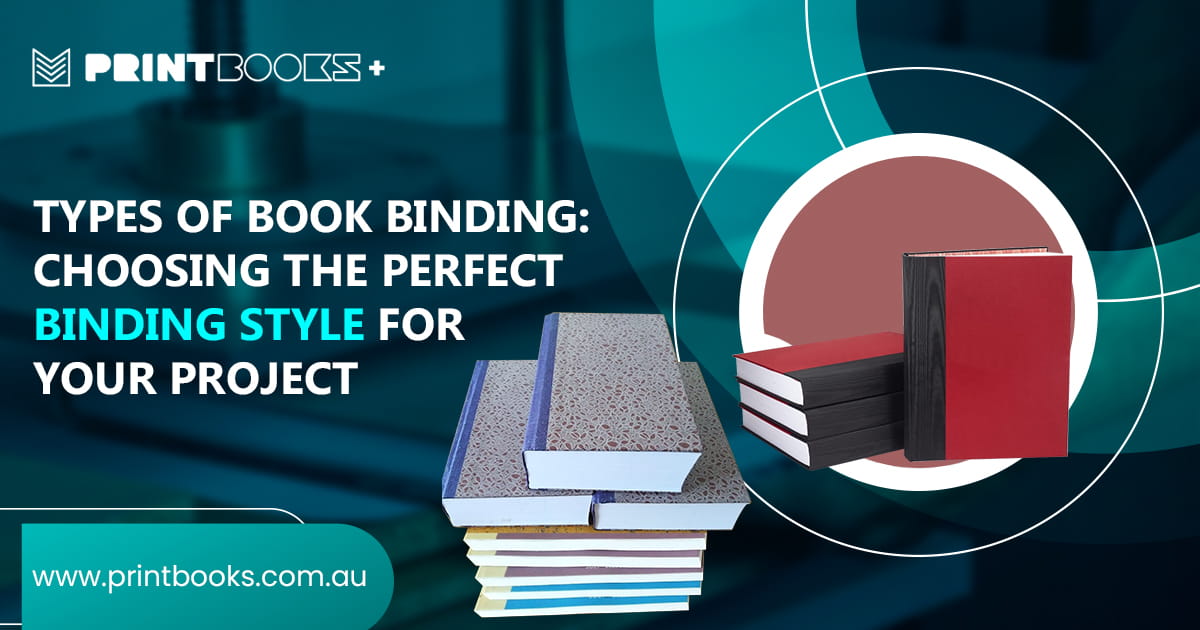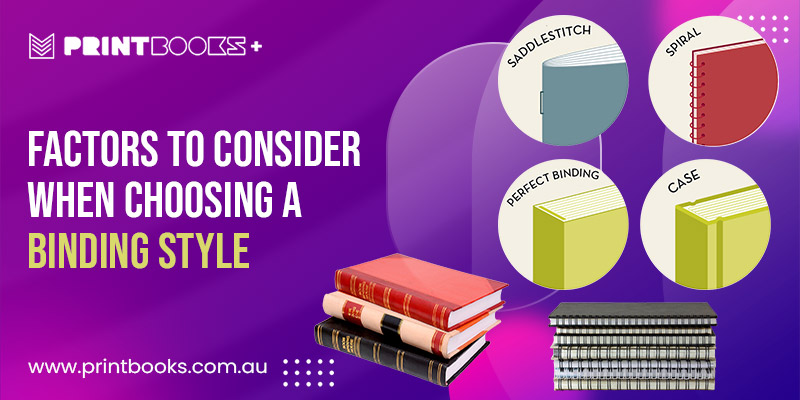Types of Book Binding: Choosing the Perfect Binding Style for Your Project

If you have written your first draft, the excitement of getting your book published is at its peak. Before publishing and advertising, the major step is the bookbinding process.
A well-bound book boosts the look and adds a touch of elegance to the book.
If you want your book to look professional, you should know the various book binding methods and the complete process.
To ease your journey, we have compiled a guide on everything you should know about bookbinding.
Understanding Book Binding: The Basics
Attaching or joining together the pages of a book into a complete bundle is called bookbinding. The main purpose is to ensure that the pages do not fall apart.
The binding styles can vary depending on the techniques, materials, and tools used for binding.
However, each style involves inserting a cover page for the front and back of the manuscript, or a few in between the pages to segregate the chapters.
Based on the project and your specific needs, the binding types can vary significantly.
Choosing the right binding style is the difference between a professional and an amateur book. The durability of the book also depends on it. A wrong choice can lead to pages falling apart over time.
Popular Book Binding Styles
There are various types of binding to choose from. Each type comes with its benefits and is suitable for specific book types. Some of the popular styles include:
Saddle Stitching
If you are going for pamphlets, magazines, or thin books then saddle stitching is your choice. It is a simple technique of stapling the pages together along the spine. The pages in this method are divided into half.
Pros of Saddle Stitching
- It is affordable
- It is a quick, faster, and easy binding method
- Suitable for portable books and travelling
Cons of Saddle Stitching
- Not suitable for books with many pages
- Does not last long
Perfect Binding
Perfect binding is a popular binding style for paperback books and magazines. This process involves gluing the spine edge of a text block, or a stack of paper, to a wrap-around cover.
Pros of Perfect Binding
- It is a versatile binding method and is used for most book types
- Suitable for a few or large numbers of pages
- Gives a professional look
Cons of Perfect Binding
- Not suitable for books with rugged or rough use
- Probability of books being crushed under the pressure
Spiral Binding
Spiral binding is a popular binding style that is commonly used for notebooks, reports, and cookbooks. This style involves coiling a plastic or metal coil through a series of punched holes.
Pros of Spiral Binding
- It is durable
- It can withstand rough or heavy usage
- Commonly selected for books with frequent usage
Cons of Spiral Binding
- Does not render a professional look
- Not suitable for a book with many pages
Case Binding
Case binding is a popular binding style that is typically used for classic literature, textbooks, and photo albums. This style involves attaching endpapers to the book block, which is then glued to the cover. The cover of a hardback book is usually covered in cloth, silk, leather, or paper.
Pros of Case Binding.
- It is the best binding method for long-lasting books
- It gives an elegant and a professional look
Cons of Case Binding
- Expensive for a book with shorter pages
Factors to Consider When Choosing a Binding Style

Purpose of the Book
The purpose of your book will determine how it should be bound. For instance, technical manuals require durable and sturdy binding options, while novels may be bound with more affordable spine options to keep costs low.
Book Size and Page Count
The size and page count of your book is essential when choosing the binding method. For example, it is not preferred to use Perfect Binding for books less than 60 pages. Wire-O Binding or Spiral Binding is used for smaller books to help them lay flat when open.
Budget Constraints
Cost is another important consideration when choosing a binding style. Keep in mind that some binding styles are more economical than others, and certain binding styles may be more time-consuming than others.
Aesthetic Preferences
The aesthetic look of the binding style is also an important consideration. Think about whether you want a hardback or softcover book, the color of the cover, and other decorative features that can be used to visually style your book.
Durability Requirements
Consider the longevity of the book. How often will the book be handled or opened? Will it be subjected to extreme temperatures? Carefully consider the materials used for the cover and the binding style to ensure the book is robust and can withstand frequent use or exposure to challenging conditions.
Wrapping Up
Print Books offers a wide selection of book binding services to suit all your needs and budgets. Whether you are looking for a paperback or hardback book, spiral bound or wire-o-binding, we can help you with the perfect solution to meet your budget and deadlines. Our book spines have a variety of different finishing processes including laser cutting, foil stamping, and embossing that can be customized to fit your needs.
Get in touch with us to know the different bookbinding options in Australia. Our experts will help you suggest the best one according to your needs.
